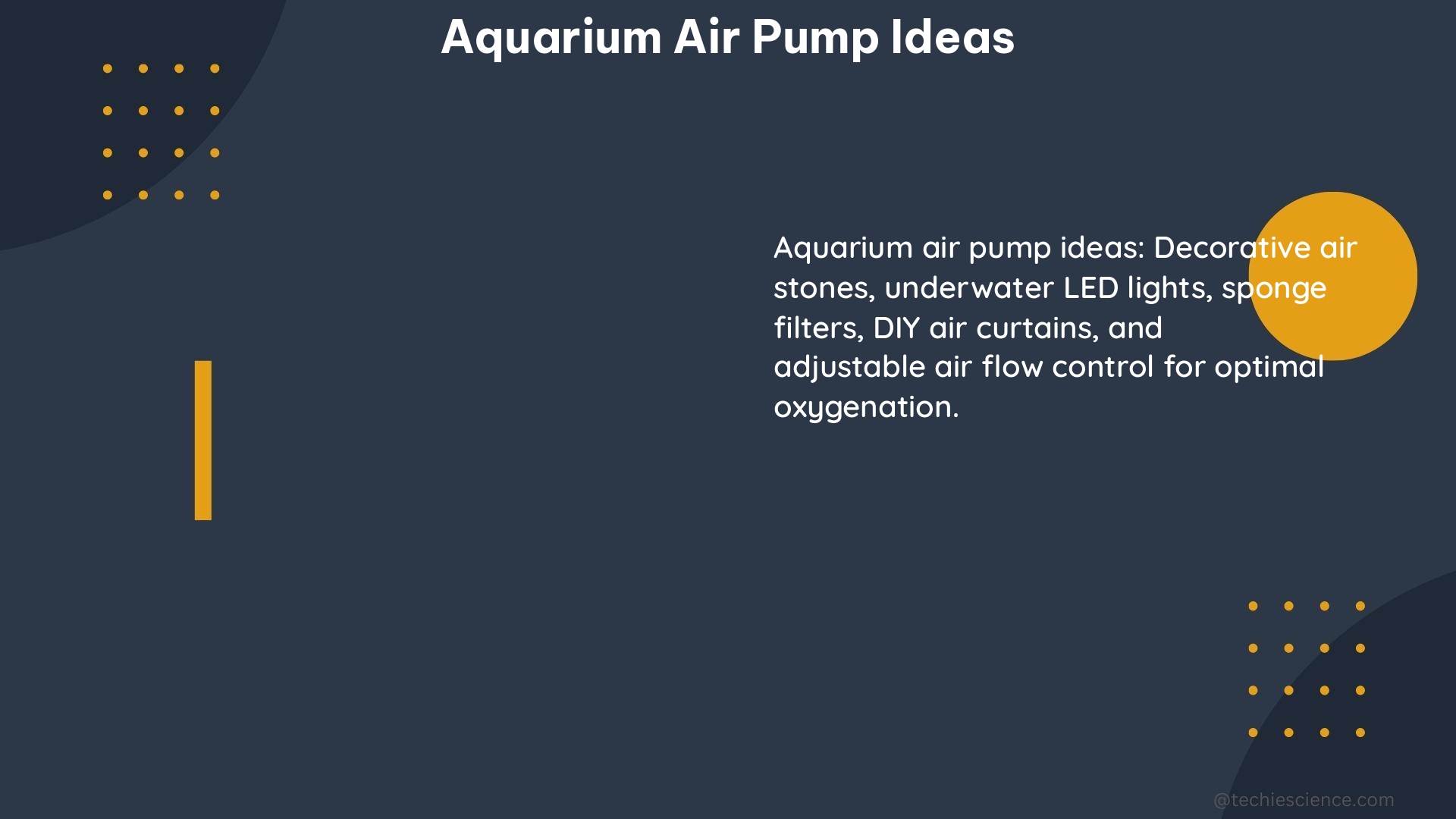Aquarium air pumps are an essential component of many aquarium setups, providing water movement, oxygenation, and filtration. Understanding the technical specifications and performance characteristics of these pumps is crucial for selecting the right one for your aquarium. In this comprehensive guide, we’ll explore various measurable, quantifiable data points and unique perspectives on aquarium air pump ideas, including DIY approaches and technical specifications.
Flow Rate: Measuring the Volume of Air Moved
Flow rate is the volume of air moved by the pump per unit time, typically measured in liters per minute (LPM) or gallons per hour (GPH). This parameter is crucial for determining the appropriate air pump size for your aquarium. For example, a common air pump might have a flow rate of 4 LPM at sea level, but the flow rate can decrease as the pump is submerged deeper in water. At a depth of 80 cm (0.8 m), the flow rate would be approximately 2 LPM, a 50% reduction.
Pressure: Exerting Force on the Water

Pressure is the force exerted by the air pump on the water, measured in PSI (pounds per square inch) or MPa (megapascals). This is particularly important for deep-water aquariums, where the water column can exert significant pressure on the air pump. For instance, a deep-water air pump designed for a 2 m (200 cm) column of water might have a maximum pressure rating of 0.1 MPa, ensuring it can overcome the water pressure and deliver the necessary air flow.
Power Consumption: Measuring Electrical Demand
Air pumps consume electrical power, which is usually measured in watts (W). A typical aquarium air pump might consume between 2 and 10 watts of power, depending on the size and flow rate of the pump. Knowing the power consumption of your air pump is essential for selecting the appropriate power source and ensuring energy efficiency.
Noise Level: Minimizing Disturbance
Noise level is another important consideration when choosing an air pump, as it can vary significantly between different models. Noise is typically measured in decibels (dB), and some air pumps are designed to be quieter than others, which can be beneficial if the aquarium is located in a living space. For example, a quiet air pump with a noise level of 35 dB might be preferable to a louder model with 50 dB.
DIY Approaches: Monitoring Air Pump Performance
It is possible to create a simple DIY air pump monitoring system using a tee connector, a flow control clamp, and a jar with water. By monitoring the bubbling in the jar, you can detect changes in the pump’s performance, such as an increase in pressure or a decrease in flow rate. This can be useful for identifying pump failures or other issues before they become critical. For instance, you might notice a gradual decrease in the bubble rate, indicating a potential problem with the pump that requires attention.
Technical Specifications: Choosing the Right Pump
When selecting an air pump for your aquarium, it is essential to consider the technical specifications of the pump, such as the flow rate, pressure, power consumption, and noise level. These specifications can vary significantly between different models, so it is crucial to choose a pump that is appropriate for the size and requirements of your aquarium. For example, a high-flow air pump with a rating of 10 LPM might be suitable for a large aquarium, while a lower-flow model of 4 LPM might be more appropriate for a smaller setup.
By understanding the measurable, quantifiable data points associated with air pumps, such as flow rate, pressure, power consumption, and noise level, you can make an informed decision when choosing the right air pump for your aquarium. Additionally, exploring DIY approaches and technical specifications can provide valuable insights into the performance and capabilities of different air pump models, helping you create a thriving, well-oxygenated aquatic environment.
References:
– Creating Current with Airpump
– Experimenting with Air Pump to Supply Outside Air to Tank
– Is There a Relatively Inexpensive Way to Measure Air Pump Flow Rate?
– Air Pumps are Confusing
– Aquarium Air Pump Monitoring System
